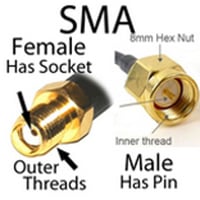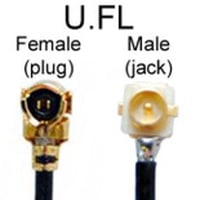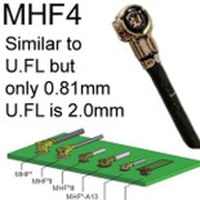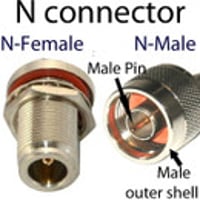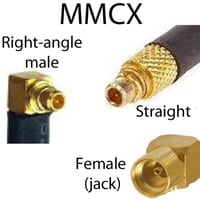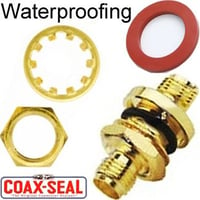SMA female to SMA female
SMA female-to-female Cables

The female SMA connector
The female SMA connector is a subminiature barrel-shaped, threaded connector. It is made machined with external threads. Within the connector is a PTFE dielectric and beryllium copper receptacle that receives the conducting pin of the male connector. SMA connectors are rugged, with weatherproof screw coupling that is rated for over 500 mating cycles. The SMA connector has an impedance of 50 Ohms with exemplary impedance-matching, power handling, and signal performance, making it widespread in telecommunications.
In-series SMA female to SMA female adapters
SMA female to SMA female adapters and cables provide a competent in-series connection for two SMA male connectors on antennas, cables, and other radio components. Choose from the following SMA connectors and adapters:
- SMA female to connect two male SMA connectors together.
- SMA female—SMA female bulkhead: An SMA female bulkhead connector can be used to mount an SMA male antenna in an L-shaped mount, securing it to an SMA male cable with a weatherproof seal.
- SMA female - SMA female pigtail: A simple pigtail adapter includes a semi-rigid, low-loss coaxial cable between the two connectors for added flexibility.
- SMA female—SMA female right-angle adapter: The right-angle enables mated connectors and their cables to be more compact and protects the cable from excessive bending and strain.
Applications of SMA female to SMA female adapters
These are high-utility wireless networking components that make it easier to make essential connections between antennae, radios, and cables. They also enable connections to connect indoor equipment to an outdoor antenna. Use SMA female to SMA female adapters for the following varied applications:
- Cellular networking: from base stations to phones, routers, and other end-user devices
- Wi-Fi: for antennas, cables, routers, and access points
- GPS and other satellite communications: adapters connect antennas, signal amplifiers, and receivers.
- Ham radio antennas, cabling, and transceivers.
- Testing and measurement: right-angle adapters are helpful for organizing cable arrays

